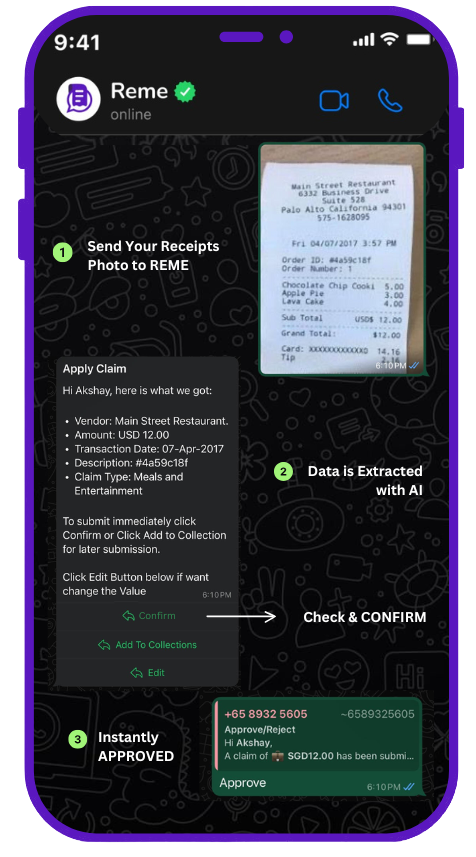In an era where environmental sustainability has evolved from a corporate nice-to-have to a business imperative, organizations are increasingly scrutinizing their operations for opportunities to reduce their environmental footprint. Among the most impactful yet often overlooked opportunities is the transition to paperless expense management systems. The environmental benefits of going digital with expense processes extend far beyond simply saving trees—they represent a comprehensive approach to sustainability that delivers measurable impact across multiple environmental dimensions.
The Environmental Cost of Paper-Based Expenses
Traditional expense management relies heavily on paper at every step of the process. From collecting physical receipts and completing paper forms to printing reports and storing documents, the environmental toll adds up quickly:
Resource Consumption
The paper expense cycle consumes significant natural resources:
- Trees: A typical office worker uses approximately 10,000 sheets of paper annually, with expense documentation accounting for a substantial portion of this usage. For a company with 100 employees, this translates to nearly 120 trees per year.
- Water: Paper production is water-intensive, requiring approximately 10 liters of water per sheet. For a mid-sized company processing thousands of expense reports annually, the hidden water footprint is staggering.
- Energy: The energy required to manufacture paper for expense documentation—including pulping, pressing, and drying—contributes significantly to corporate carbon emissions.
Carbon Footprint
The lifecycle of paper expense management generates greenhouse gas emissions at multiple points:
- Production emissions: Paper manufacturing ranks as the fourth largest industrial contributor to greenhouse gas emissions.
- Transportation impact: Physical receipts and documents must be transported between employees, managers, and finance departments, adding to fossil fuel consumption.
- End-of-life disposal: When expense documents reach their retention limit, they often end up in landfills where they generate methane as they decompose.
Chemical Impact
Paper processing involves concerning chemical processes:
- Bleaching agents: Traditional paper production uses chlorine compounds that can create toxic byproducts.
- Inks and toners: Printing expense reports and making copies introduces additional chemicals into the environment.
- Storage preservation: Long-term document storage often involves protective chemicals to prevent degradation.
Quantifying the Environmental Impact
To understand the true environmental cost of paper-based expense systems, consider these statistics for a company with 500 employees:
- Paper consumption: Approximately 125,000 sheets annually for expense documentation
- Water usage: Over 1.25 million liters of water consumed in paper production
- Carbon emissions: Nearly 7.5 metric tons of CO2 generated from paper manufacturing and disposal
- Physical storage: Roughly 50 square feet of office space dedicated to document storage
These figures represent just the direct environmental impacts, without accounting for the secondary effects of transportation, energy used in processing, and chemical exposures.
The Environmental Benefits of Digital Transformation
Modern digital expense management platforms deliver substantial environmental advantages that compound over time:
Elimination of Paper Consumption
Digital platforms completely remove paper from the expense equation:
- Digital receipt capture: Mobile apps enable employees to photograph receipts immediately, eliminating the need to preserve physical copies.
- Online form submission: Electronic expense reports replace paper forms and attachments.
- Digital approval workflows: Automated routing eliminates the need for physical signatures and paper routing.
- Electronic storage: Secure cloud storage replaces filing cabinets and storage boxes.
For a mid-sized organization processing 1,000 expense reports monthly, this transition can save over 72,000 sheets of paper annually—equivalent to 8-10 trees and thousands of gallons of water.
Reduced Carbon Emissions
Digital expense management significantly lowers carbon footprints through:
- Decreased transportation needs: No physical documents means no courier services, mail delivery, or employee travel to deliver paperwork.
- Lower office energy usage: Reduced need for printing, copying, scanning, and physical storage space translates to lower electricity consumption.
- Minimized waste production: Digital processes generate no physical waste that requires disposal or recycling.
Research indicates that organizations implementing digital expense management can reduce carbon emissions related to expense processing by up to 90%.
Office Space Optimization
Paper-free expense management delivers space-related benefits:
- Elimination of filing cabinets: A standard four-drawer filing cabinet occupies 7.5 square feet and holds approximately 15,000 documents—space that can be repurposed or eliminated.
- Reduced storage requirements: Companies can minimize or eliminate off-site storage facilities.
- Smaller physical footprint: Reduced space needs can lead to more efficient office layouts or downsizing opportunities, further reducing environmental impact.
Water Conservation
Digital transformation preserves precious water resources:
- Manufacturing reduction: Eliminating paper expense reports directly reduces water consumption in paper production.
- Processing elimination: No need for water-intensive pulping and processing of recycled paper documents.
- Reduced water pollution: Fewer chemicals from paper production and document disposal enter water systems.
Beyond Environmental Benefits: The Triple Bottom Line
The environmental benefits of digital expense management create cascading effects that enhance both the financial and social aspects of sustainability:
Economic Advantages
- Reduced supply costs: Organizations save on paper, ink, toner, and storage materials.
- Lower processing expenses: Automated processing reduces labor costs associated with manual data entry and filing.
- Decreased storage expenses: Companies can reduce or eliminate costs associated with physical document storage.
- Improved compliance: Digital systems ensure proper record retention without physical storage challenges.
Social Benefits
- Enhanced employee satisfaction: Digital systems simplify expense submission and reimbursement, reducing frustration.
- Remote work enablement: Paperless systems support distributed workforces and flexible arrangements.
- Improved accessibility: Digital data is more accessible to employees with certain disabilities than paper-based systems.
- Healthier work environment: Reduced paper storage improves air quality and reduces dust and allergens.
Implementation Strategies for Environmental Impact
To maximize the environmental benefits of digital expense management, organizations should:
Measure Current Consumption
Before implementation, document:
- Paper usage for expense reports
- Storage space devoted to expense documentation
- Time spent on physical document handling
Set Reduction Targets
Establish clear goals for:
- Paper elimination timelines
- Carbon footprint reduction
- Storage space reclamation
Create Comprehensive Implementation Plans
Develop strategies that address:
- Employee training on digital receipt capture
- Integration with existing financial systems
- Secure destruction of legacy paper documents
- Communication of environmental benefits to stakeholders
Track and Report Environmental Savings
Regularly calculate and share:
- Trees saved through paper reduction
- Water conserved in manufacturing
- Carbon emissions prevented
- Space reclaimed for productive use
Conclusion
The environmental case for digital expense management is compelling and comprehensive. By eliminating paper from expense processes, organizations not only streamline operations and reduce costs but also make meaningful contributions to environmental sustainability. The transition delivers measurable reductions in resource consumption, carbon emissions, and chemical usage while supporting broader corporate sustainability initiatives.
As organizations increasingly face pressure from consumers, investors, and regulators to demonstrate environmental responsibility, digital expense management represents a readily achievable opportunity to deliver tangible results. The environmental benefits extend far beyond simply saving trees—they represent a holistic approach to sustainability that addresses multiple environmental concerns while simultaneously improving operational efficiency.
In the journey toward corporate sustainability, digital expense management stands out as a rare opportunity that delivers clear environmental benefits while simultaneously enhancing the bottom line. For forward-thinking organizations, the question isn’t whether to implement digital expense management, but how quickly they can make the transition and start realizing these substantial environmental advantages.




